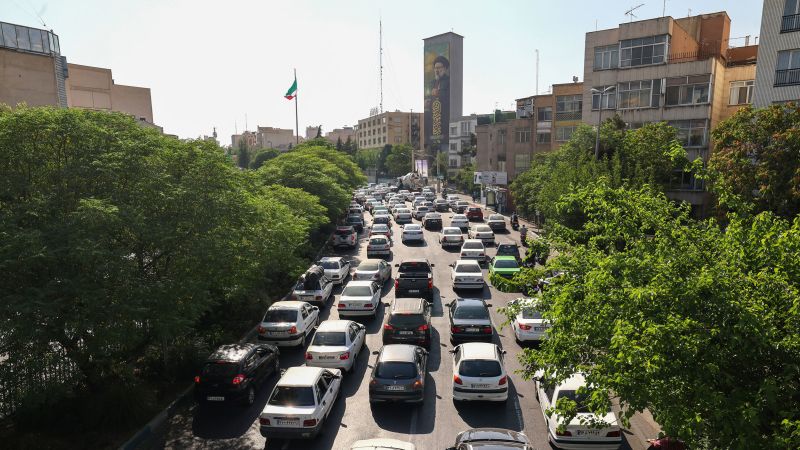The ongoing conflict in the Middle East, particularly between Israel and Hamas, has led to a significant number of Americans fleeing Iran, as detailed in a recently released internal report by the State Department. The report, which surfaced on a Friday, highlights the precarious situation for U.S. citizens residing in Iran amid escalating tensions and the potential for U.S. military action. The turmoil has prompted U.S. citizens to seek safety and alternative means to leave the country, stressing the urgency for intervention.
It is important to note that the exact number of Americans currently in Iran remains unclear because the State Department does not mandate U.S. citizens to register their presence in foreign countries. This lack of clarity poses challenges for both the government and citizens attempting to formulate an evacuation strategy. In stark contrast to the situation in Israel, where the U.S. is working diligently to organize transportation options for the estimated hundreds of thousands of Americans, no such logistical support exists for U.S. citizens in Iran due to the absence of a diplomatic presence in the country.
During a press briefing, State Department spokesperson Tammy Bruce addressed the situation, stating, “We do not anticipate offering direct U.S. government-assisted departure from Iran.” This statement has raised concerns and alarm among families and friends of U.S. citizens in Iran who are struggling to exit the country amidst rising hostilities. The complexity of the situation is compounded by the cultural and logistical barriers that Americans face while trying to depart.
The situation report indicated that numerous Americans attempting to leave Iran were subjected to various difficulties, including encountering checkpoints and undergoing questioning by local authorities. Many U.S. citizens have described experiencing delays and harassment throughout their exit journey, which only heightens the anxiety and uncertainty that these individuals face. In one alarming instance, two Americans were reportedly detained while trying to flee the country, showcasing the potential dangers facing American nationals in Iran.
Concerns from family members of U.S. citizens have also surfaced, with one individual expressing frustration toward the State Department. The family member criticized the agency for deferring responsibilities to overwhelmed U.S. embassies, asserting that it is crucial for the agency to exert more pressure on Iran’s neighboring countries to facilitate the admission of Americans seeking to leave. Additionally, they suggested deploying embassy officials closer to the Iranian border in an attempt to provide aid to those wishing to depart.
As the crisis unfolds, over 25,000 individuals have reached out to the State Department seeking information regarding the evolving situations in Israel, the West Bank, and Iran. According to Bruce, many inquiries focus on general information, and some may involve questions about departure options as conditions deteriorate.
To assist in this difficult process, the State Department has implemented a “crisis intake form” for Americans in Iran and Israel. This initiative aims to streamline the requests for assistance from those trying to navigate their exit from the increasingly unstable regions. Bruce emphasized that Americans seeking an exit should utilize existing means of travel available to them, underscoring the need for individual initiative in these challenging circumstances.
In parallel, U.S. Ambassador to Israel Mike Huckabee stated that efforts are underway to facilitate evacuation for Americans in Israel through various means such as military, commercial, and charter flights, along with cruise ships. Meanwhile, President Donald Trump announced the opening of a two-week negotiating window regarding possible military action against Iran, which has triggered heightened urgency in restarting discussions that had stalled amid recent escalations in violence.
In conclusion, as the complexities of the Iranian crisis deepen, the safety and well-being of Americans in the region hinge on multiple factors, including diplomatic efforts, logistics, and personal resolve. Families remain on edge, waiting for concrete updates and potential solutions, while the U.S. government navigates the precarious landscape of international relations amidst one of the most turbulent times in recent history. The dynamics of the situation continue to evolve, requiring constant attention and proactive measures to safeguard American interests abroad.



